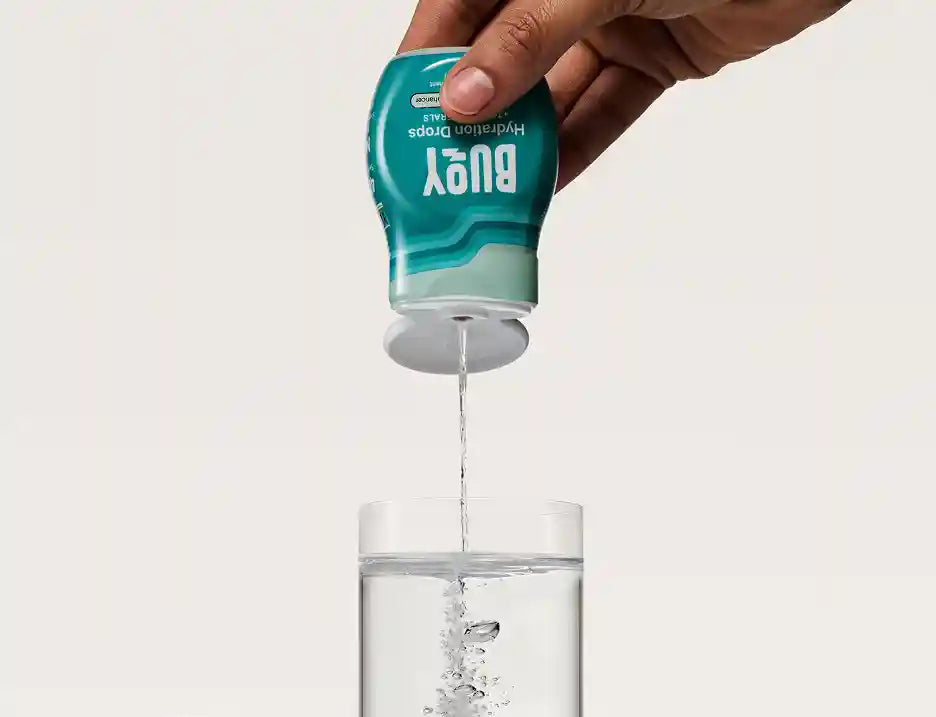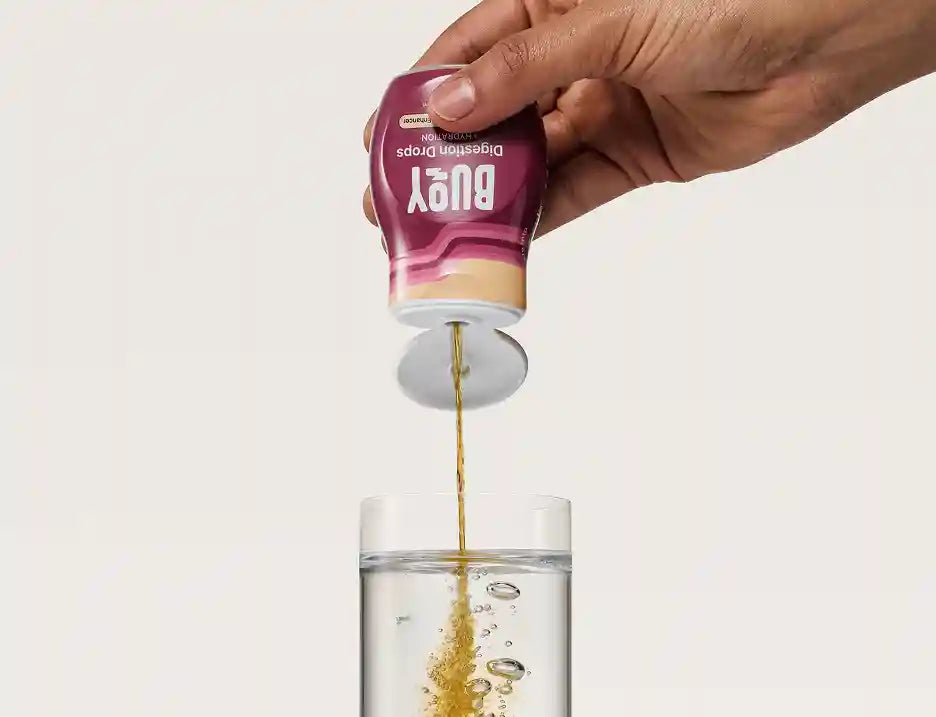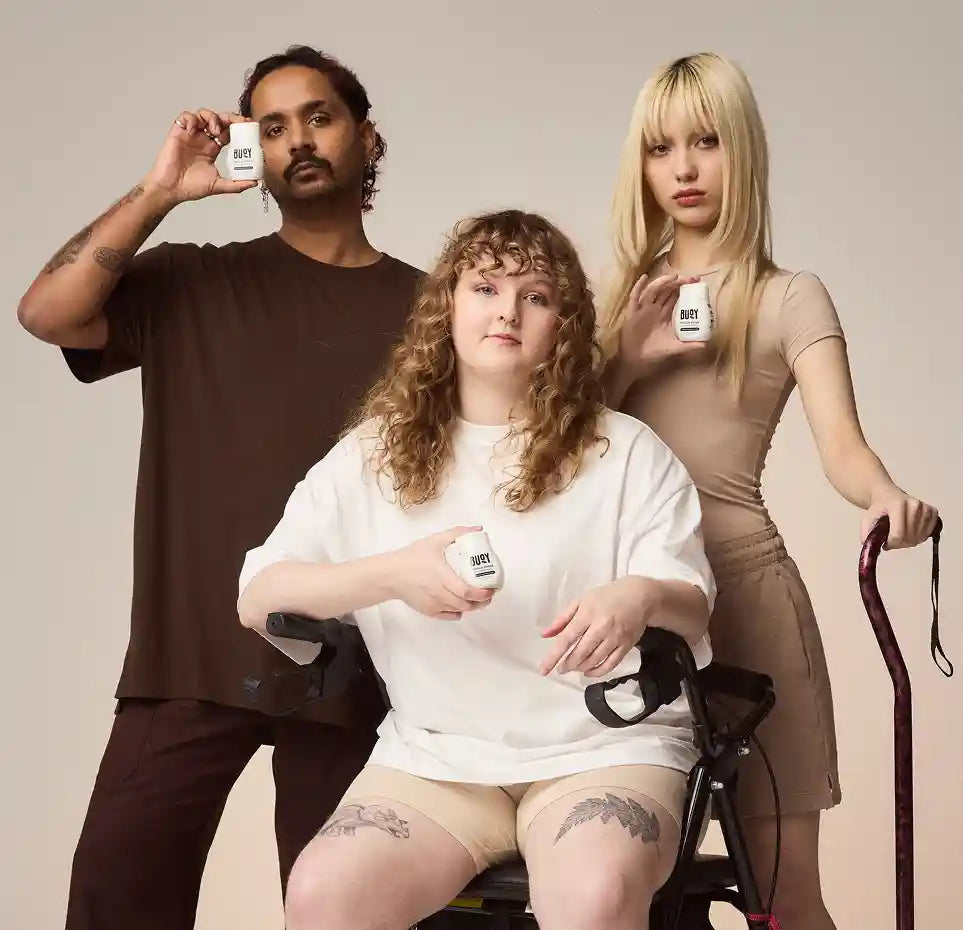
POTS in Children and Teens: A Comprehensive Guide for Parents and Caregivers
Share
If your child or teen has been diagnosed with POTS (that’s short for Postural Orthostatic Tachycardia Syndrome), you might be feeling a bit overwhelmed. Don’t worry – we’re here to help you make sense of it all.
POTS can be tricky, especially when it shows up in younger people. It’s not always easy to spot, and it can really shake things up for kids at school and in their social lives. But here’s the good news: understanding POTS in teens and children and catching it early can make a big difference in helping your child feel better and live life to the fullest.
Essential Takeaways:
- Early Detection is Key: Recognizing POTS symptoms in children and teens can lead to faster diagnosis and treatment. Watch for signs like dizziness when standing, rapid heartbeat, fatigue, and difficulty concentrating, especially if they persist over time.
- Personalized Treatment Helps: Every child with POTS is unique. Working closely with healthcare providers to develop a management plan tailored to their needs can significantly improve your child’s quality of life.
In this guide, we’re going to break it down and talk about what POTS looks like in kids and teens, how doctors diagnose this condition, and what you can do to help your child manage it.
- What Are the Symptoms of POTS in Children and Teens?
- How Is POTS Diagnosed in Young People?
- Effective Management Strategies for Pediatric POTS
- Supporting Your Child or Teen with POTS
- School and Social Life: Navigating POTS Challenges
- Expert Advice: Pediatric POTS Specialists
- Resources for Parents and Caregivers
- Support Your Child’s Journey of Living with POTS
What Are the Symptoms of POTS in Children and Teens?
POTS in children can show up in all sorts of ways, and it might look a bit different in kids than in adults. The most common sign is feeling dizzy or lightheaded, especially when standing up. Your child might also experience:
- A racing or pounding heart
- Extreme fatigue or weakness
- Difficulty concentrating, also called “brain fog”
Headaches are another common symptom, and some kids might feel sick to their stomach or even faint. Less common signs include chest pain, trouble breathing, or problems regulating body temperature.
Impact on Daily Life
These symptoms can really interfere with a kid’s day-to-day life. They might struggle to:
- Get to school regularly
- Finish homework on time
- Join in sports and other physical activities
- Hang out with friends
These challenges can affect their academic performance, social development, and overall well-being. It’s important to recognize these impacts and find supportive strategies to help them manage their symptoms effectively.
Dealing with Changing Symptoms
Remember, POTS symptoms in children can come and go. Some days might be more challenging than others, and things like dehydration, hot weather, or standing for a long time can make symptoms worse.
Recognizing Individual Patterns
It’s important to note that every child with POTS may experience symptoms differently. Keeping a symptom diary can help you and your child’s doctor identify patterns and triggers specific to your child, which can be invaluable in developing an effective management plan (1,2).
Learn more about POTS symptoms in our guide: Recognizing the Symptoms of POTS.
How Is POTS Diagnosed in Young People?
Figuring out if your child has POTS can be like solving a puzzle. POTS diagnosis in teens can be especially difficult because symptoms often look like other conditions common in adolescence. Usually, the process starts by talking to their doctor about symptoms and when they started.
The doctor will do a physical check-up, including checking their heart rate and blood pressure while lying down, sitting, and standing.
Tests Used to Diagnose POTS
The doctor will perform a physical examination, including checking heart rate and blood pressure while lying down, sitting, and standing. Additional tests may include:
- Tilt table test
- Heart tests (ECG or echocardiogram)
- Blood tests
- 24-hour heart monitor
These tests help the doctor understand how your child’s body responds to different positions and activities, providing important information to accurately diagnose and manage POTS.
What Doctors Are Looking For
For kids and teens, doctors are looking for:
- A big jump in heart rate when standing up
- Symptoms that get worse when upright and improve when lying down
- Symptoms that persist for at least 3 months
Your doctor will also want to make sure there are no other health issues that could explain what’s going on (1). It’s important to see a doctor who knows about POTS in kids, as they’ll be better at distinguishing between POTS and other conditions with similar symptoms.
Remember, understanding and managing POTS is a journey. With the right support and care, many children and teens with POTS can lead full and active lives.

POTS symptoms in children and teens can be physically and emotionally challenging. Recognizing and addressing these symptoms early can make a big difference in managing this condition.
Effective Management Strategies for Pediatric POTS
Managing POTS in young people often requires a multifaceted approach tailored to each child’s unique symptoms and lifestyle. Since the condition is complex and affects each child differently, it’s important to work with your healthcare provider to develop a personalized treatment plan.
Let’s explore some effective strategies that can help manage POTS in teens and children.
Hydration and Salt Intake
Increasing fluid and salt intake is often a key part of managing POTS. Your doctor can provide guidance on the right amounts for your child. Remember, everyone’s needs are different, so what works for one child may not work for another.
Exercise and Physical Activity
Regular exercise can help too, but it’s important to start slow. Begin with exercises they can complete while lying down like swimming, cycling on a recumbent bike, or rowing, then gradually do more over time. This approach can help build endurance without triggering symptoms.
Lifestyle Adjustments
Some kids find that wearing compression gear like socks or leggings help them feel better. Getting enough sleep is important, so setting up a good bedtime routine can help with fatigue. When it comes to eating, some kids feel better with small, frequent meals and avoiding too many carbs at once.
Medical Interventions
POTS treatment for kids may include medications prescribed by a doctor to help manage specific symptoms, such as beta-blockers to control heart rate or medications to increase blood volume. Physical therapy or occupational therapy can be helpful, too. The key is to work with your child’s doctor to figure out what works best for your kid (1,2).
Remember, treatment plans often need to be adjusted over time as your child grows and their symptoms change. Discover how to create a POTS management plan in our step-by-step guide.
Supporting Your Child or Teen with POTS
POTS can be tough on kids emotionally. They might feel different from their friends, frustrated that they can’t do everything they want to do, or worried about their symptoms.
It’s not uncommon for kids with POTS to feel down about having a chronic illness or unsure how to explain it to others. That’s why supporting young POTS patients is so important.
Providing Emotional Support
As a parent, one of the best things you can do is listen to your child without judgment. Encourage them to talk about how they’re feeling and help them set realistic goals. Celebrate the small wins – they matter a lot!
Building a Support Network
Finding ways for your child to connect with other kids who have POTS can be really helpful. And don’t forget to work with their school to get them the help they need. Stay positive, but also acknowledge that it’s okay to have tough days.
If your child is really struggling, talking to a therapist who knows about chronic illnesses can work wonders.
Understanding Their Emotional Journey
Remember that your child’s emotional experience with POTS may change over time. They might have good days and bad days, and their feelings about their condition may evolve as they grow and learn to manage it.
Keeping an open dialogue about their emotional well-being is just as important as managing their physical symptoms.
School and Social Life: Navigating POTS Challenges
POTS can make school and hanging out with friends difficult. Your child might have trouble going to school full-time or keeping up with schoolwork. They might miss out on fun events or after-school activities and feel left out or misunderstood.
Working with the School
Working with the school to set up a plan for your child, like an IEP or 504 Plan, can make a big difference. See if part-time or flexible attendance is possible, and use technology for learning from home when needed. Help teachers and school staff understand POTS, so they can better support your child.
Maintaining Social Connections
When it comes to their social life, encourage your child to join in low-key social activities and help them figure out how to explain POTS to friends. Connecting with understanding friends who can offer support is so important.
Adapting Strategies Over Time
Remember, every kid with POTS is different, so you may need to adjust these strategies as time goes on. The most important thing is to keep the lines of communication open with your child, their doctors, and their school.
Expert Advice: Pediatric POTS Specialists
When it comes to POTS in kids and teens, seeing a specialist can make a world of difference. These doctors have seen it all when it comes to POTS in young people, and they know the ins and outs of diagnosing and treating this complex condition.
How to Find a POTS Specialist
But how do you find the right doctor? Start by asking your child’s pediatrician for a referral. They may know a POTS specialist in your area. You can also check with children’s hospitals near you – many have dysautonomia clinics that specialize in conditions like POTS.
Don’t be afraid to reach out to POTS support groups. Other parents can be a goldmine of information about great doctors in your area.
What to Expect at Your Appointment
When you see a specialist, what can you expect? They’ll probably start by asking a lot of questions about your child’s symptoms and medical history. They might do some tests, like checking your child’s heart rate and blood pressure while lying down and standing up.
The doctor should take time to explain everything clearly and answer all of your questions.
Finding the Right Fit
They should also be open to working with your child’s school to make sure they get the support they need. It’s okay to “shop around” until you find the doctor who’s a good fit for your family. You want someone who listens, explains things well, and makes your child feel comfortable.

Supporting your child with POTS involves understanding their condition and giving them the tools and resources they need to manage symptoms.
Resources for Parents and Caregivers
Navigating POTS with your child can feel overwhelming, but you don’t have to do this alone. There are tons of dedicated POTS resources out there to help you along the way. Here are some great places to start:
- Dysautonomia International: A fantastic organization with a wealth of information about POTS, they have numerous resources just for parents and kids, including a list of classroom accommodations for children with dysautonomia and POTS exercise program instructions from the Children’s Hospital of Philadelphia.
- POTS UK: Their website has some great resources specifically for young POTS patients and their families.
- Dysautonomia Youth Network of America: This group focuses on supporting young people with autonomic disorders like POTS.
- Facebook Groups: These social media groups are a great place to connect with other families going through similar experiences. Dysautonomia International runs the largest POTS support group on Facebook. Also, check out these POTS groups for families.
- POTS Books: Start with the book, Power Over POTS: A Family Guide to Managing Postural Orthostatic Tachycardia Syndrome by Scheldon Kress, M.D., which focuses on children and teens with this condition. Get more book recommendations in our go-to guide, Comprehensive Resource Lists for POTS Patients.
- The POTS Treatment Center: In addition to treating POTS, they also offer online educational resources and webinars that can be helpful for families managing POTS at home.
Remember, knowledge is power. The more you learn about POTS, the better equipped you’ll be to support your child.
Support Your Child’s Journey of Living with POTS
Living with POTS isn’t always easy, but with the right support and tools, your child can thrive. Use the information and resources we’ve shared to become your child’s best advocate. Learn about POTS, connect with other families, and work closely with your healthcare team.
Every POTS Journey is Different
Remember, every child’s journey with POTS is unique. What works for one kid might not work for another, and that’s okay. Be patient with yourself and your child as you figure out what works best for your family.
Their resilience and your support make a great team. Celebrate the small victories and learn from the setbacks—they’re all part of the process.
Keep Learning
Don’t hesitate to explore more resources about pediatric POTS, including our comprehensive POTS guides. The more you know, the more confident you’ll feel in supporting your child. Knowledge is power when it comes to managing chronic conditions like POTS.
Get Hydration Help from Buoy
Speaking of support, have you heard about Buoy? Our electrolyte and mineral products can be a game-changer for optimizing your child’s hydration—a key aspect of managing POTS symptoms.
We understand the importance of proper hydration in managing POTS symptoms. That's why we've developed products that can help support your child's hydration needs.
Try Buoy’s New Rescue Drops
Our Rescue Drops were specially formulated with POTS in mind. They’re 6x stronger than our Hydration Drops, providing a powerful boost of electrolytes. Just add a squeeze to your child’s favorite drinks and soups for a purposely unflavored hydration upgrade.
Rescue Salt for Electrolytes On-the-Go
For a quick sodium boost on-the-go, try our Rescue Salt. This premium quality, hand harvested, unrefined sea salt can be added to food, drinks, or even placed directly on the tongue for fast absorption. It’s packed with electrolytes and minerals to support your child wherever you are.
You’re Doing Great!
Remember, you’re doing great, and with the right tools and support, your child can face the challenges of POTS head-on. Every step you take to learn about POTS and manage this condition is a step toward a better quality of life for your child.
Don’t forget to take care of yourself, too—you’ve got this!

Try Buoy Rescue Sat for a quick sodium boost and better hydration. Perfect for managing POTS symptoms on the go.
Resources:
- Chen, G., Du, J., Jin, H. & Huang, Y. (2020). Postural Tachycardia Syndrome in Children and Adolescents: Pathophysiology and Clinical Management. Frontiers in Pediatrics, 8, 474. Retrieved from https://www.ncbi.nlm.nih.gov/pmc/articles/PMC7468430/
- Healthline. (2023). Understanding Postural Orthostatic Tachycardia Syndrome (POTS) Dysautonomia. Retrieved from https://www.healthline.com/health/dysautonomia-pots




